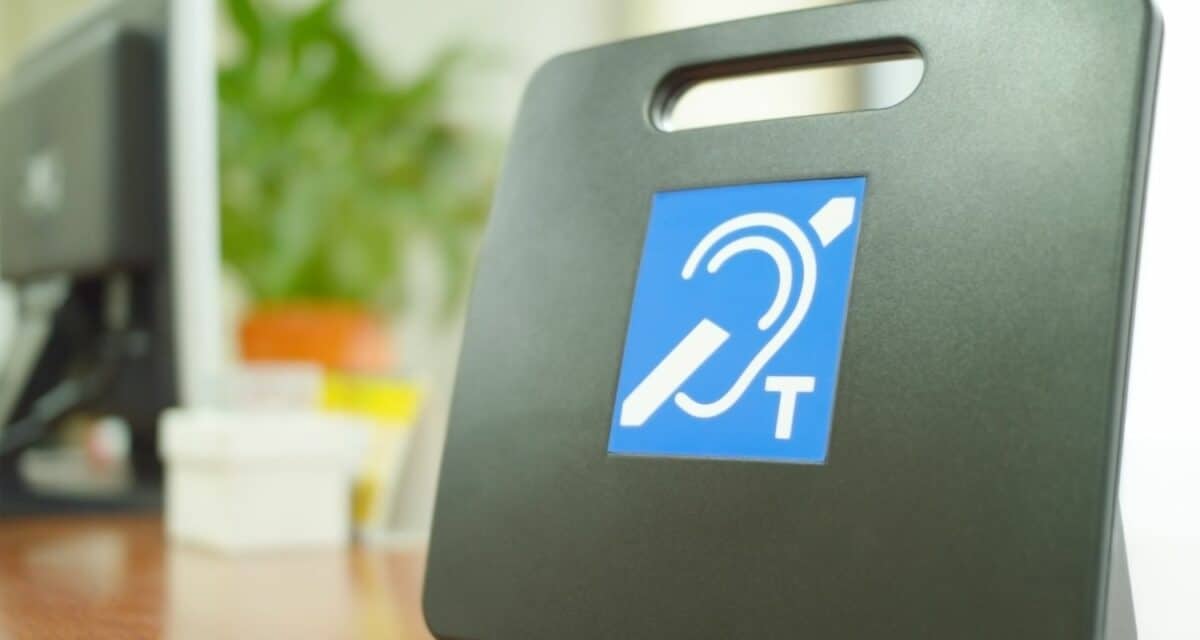Hearing aids can help improve speech comprehension in noisy environments, but there are some situations where an assistive listening device will help.
An assistive listening device (ALD) is any device that’s designed to improve your ability to hear and understand speech and other sounds. ALDs are available in many different environments, including churches and other places of worship, movie theaters, restaurants, classrooms, and more.
In complex listening circumstances, accessories that might provide a better experience than hearing aids alone are frequently required. Assistive listening devices use the most up-to-date wireless technology to improve the effectiveness of your hearing aids so you can hear better in difficult situations, such as when there is background noise, or you’re listening from a distance.
These hearing aids extend the range of your hearing aid’s ability to focus on the sounds you wish to hear. It’s easy to connect your hearing aids to them, and you may do it from the comfort of your own home.
TV streamer
One of the earliest signs of hearing loss often happens when viewing television. However, even with hearing aids, the increased volume does not always imply increased clarity.
The TV streamer allows you to broadcast crystal-clear stereo sound from your television to your ears from up to seven meters away and control the TV volume and the world around you separately.
Connect to compatible smartphones or use one of our complete hearing solutions, such as connecting to your TV with one of our TV streamer devices or listening in on background noise with a remote microphone.
Wireless microphones
These can assist in difficult hearing conditions, such as listening in cars, restaurants, meetings, or lectures. Up to a 25-meter distance, a body-worn microphone transmits the speaker’s voice directly to your hearing aids, allowing you to hear up to 10 times clearer than with your hearing aids alone.
Some can connect to telecoil loops, stream to almost any device with a headphone output, and even work with an FM receiver. The speaker’s voice will be transmitted straight to your ears, drowning out the rest of the world so you can concentrate on your conversation.
Remote controls
What if you don’t have access to a smartphone? You can operate and adjust your hearing aids discreetly with a sleek and small battery-powered device for individuals who desire limited control and minimal technology. With remote controls, there are no additional wires or connectors required.
FM Systems
These are radio-frequency wireless systems commonly used in schools but can also be utilized outdoors or in general listening scenarios. They can work over long distances. The speaker wears a microphone transmitter, and the listener wears a portable receiving device.
Bluetooth Streamer
A Bluetooth streamer is a device worn around the neck that allows users to connect hearing devices to various Bluetooth-enabled sound sources wirelessly. This allows the listener to link their hearing aid wirelessly to a mobile phone, computer, or tablet, for example, via a streamer device. It gives you a secure, low-interference connection, but only for a short distance. A single streamer allows the user to switch between many devices. The majority of hearing aid manufacturers make their streamers.
Induction Loop
Induction loops or loop systems use an electromagnetic field to convey sound between speaker and listener wirelessly. They are frequently used with a hearing aid’s telecoil or ‘T’ program (s). The loop consists of an insulated wire that can be worn around the neck or wrapped around a complete room or even a big area in a theater, cinema, place of worship, or another auditorium. It can be utilized without headphones or a receiver system without a hearing aid.
To lessen the impact of background noise and effectively shorten the distance between the sound source and listener in terms of sound, if not physically, the sound is delivered directly into the headphones/receiver system or hearing aid. They could be installed in other public buildings or spaces, such as conference rooms, lecture halls, stores, or the bank’s counter.
An induction loop is found in some, but not all, telephones. Your hearing aid must be set to the loop program to utilize the loop system, though some hearing aids can be programmed to detect the loop in a telephone and automatically switch to the ‘telecoil’ program.
These are some of the most popular assistive listening devices to be used with hearing aids.


